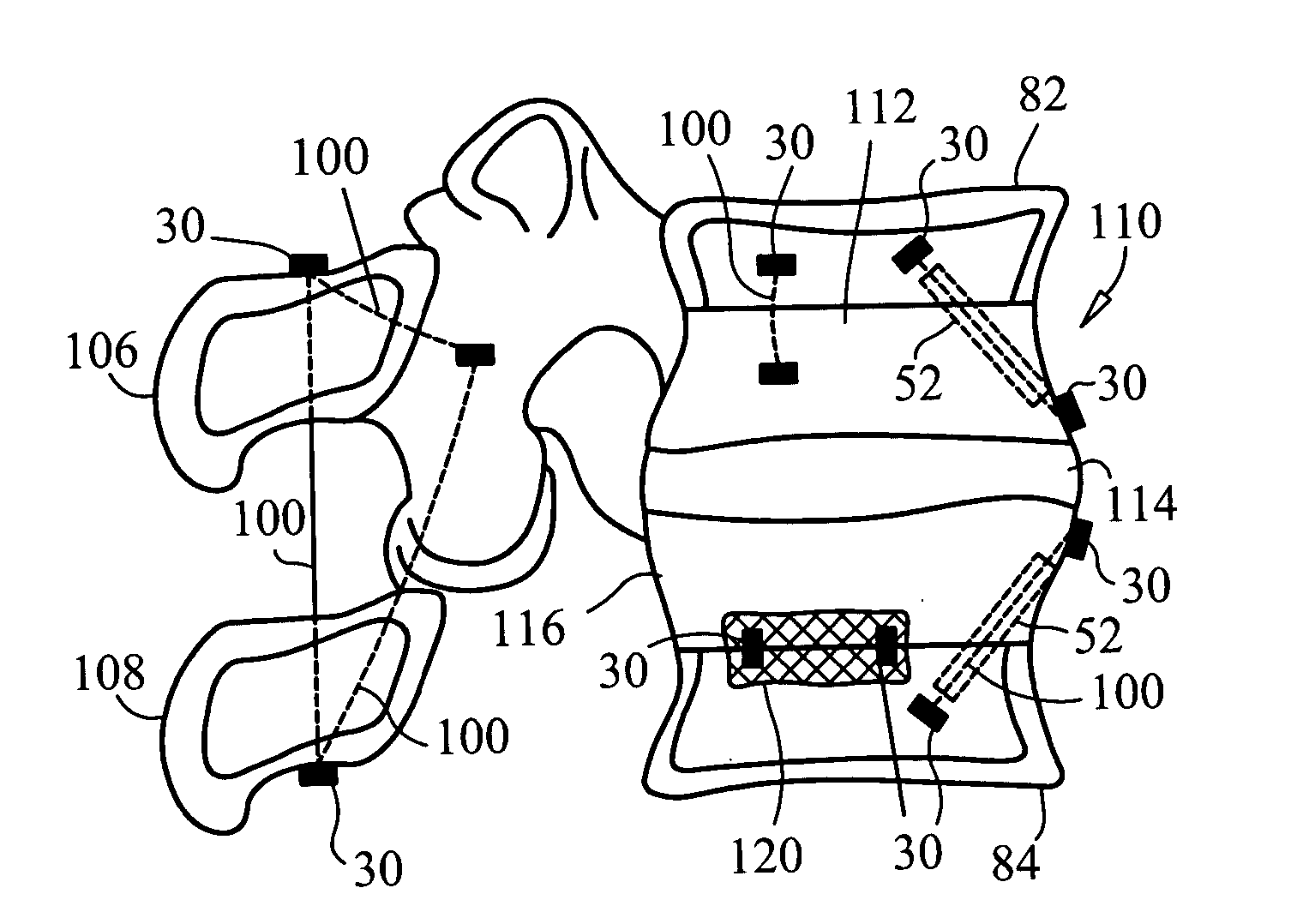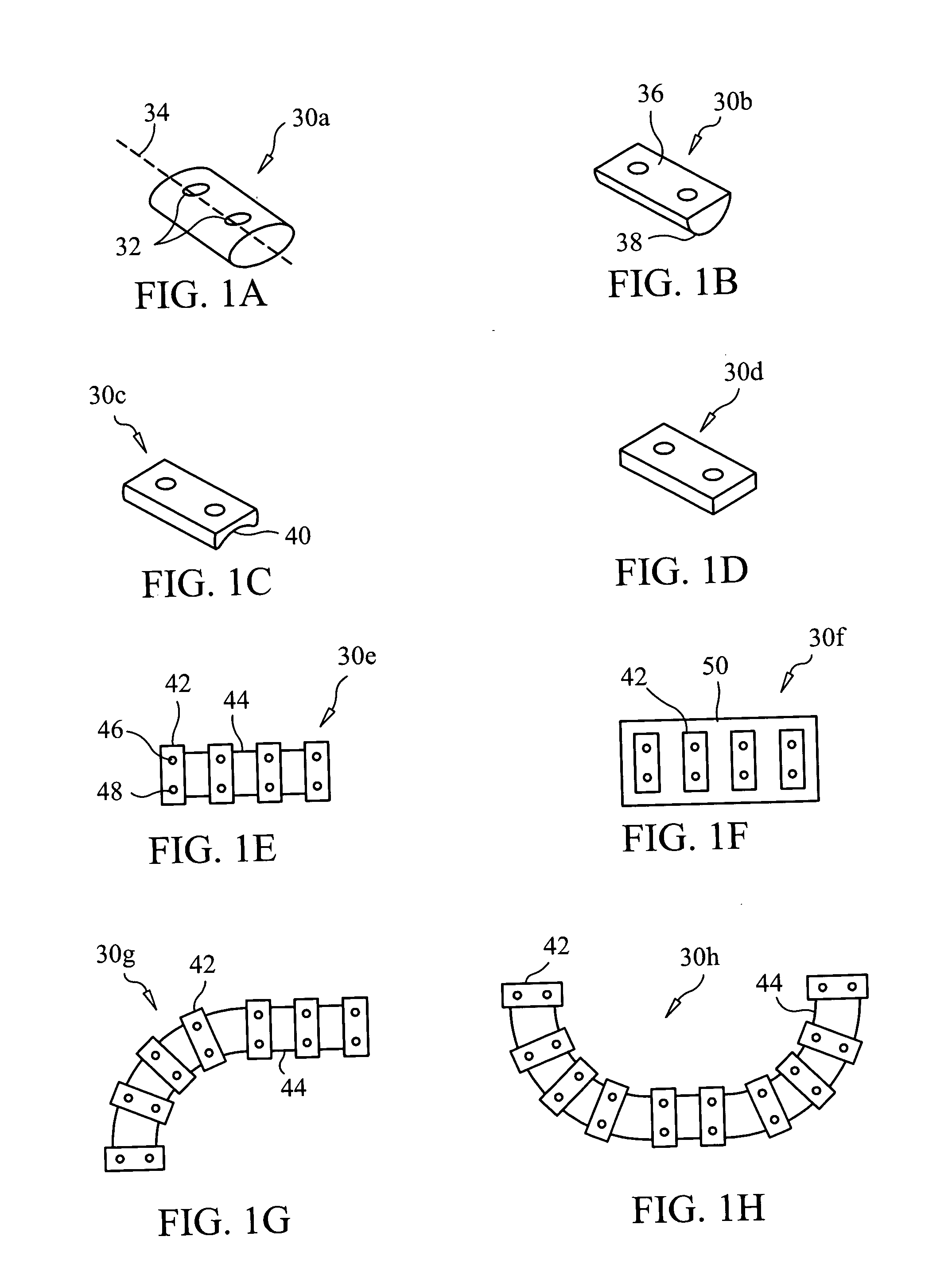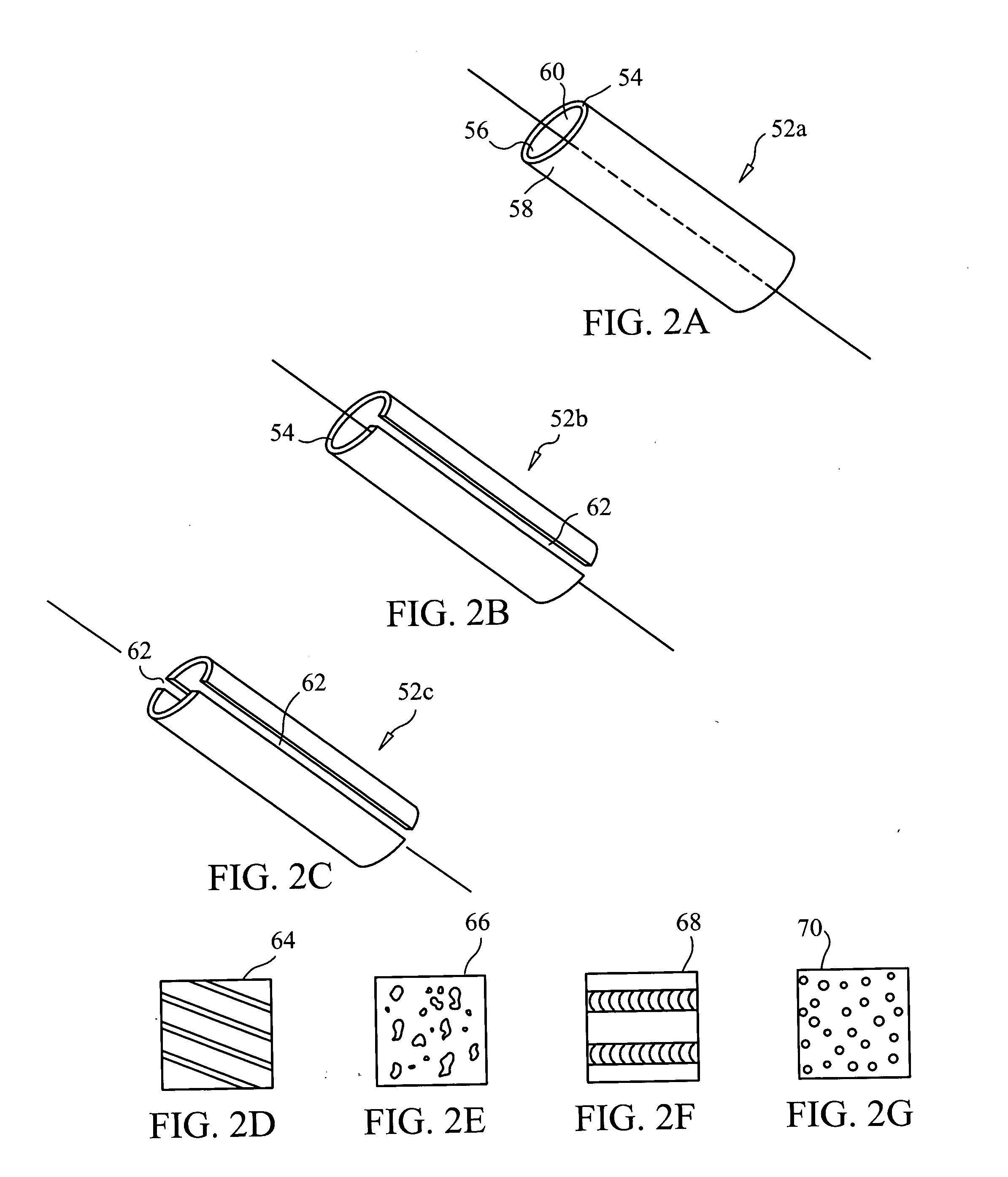Devices and methods for stabilizing tissue and implants
- Summary
- Abstract
- Description
- Claims
- Application Information
AI Technical Summary
Benefits of technology
Problems solved by technology
Method used
Image
Examples
example 1
Intervertebral Disc Repair
[0081] As previously described, the present invention provides devices and methods for fastening body tissue and / or an implant. One example is the fastening or repair of ligamentous tissue. Ligamentous tissue is found, among other locations, within intervertebral discs of the spinal column. The spinal column is formed from a number of vertebrae which are separated from each other by intervertebral discs. The intervertebral discs stabilize and distribute force between the many vertebrae. As used herein, “spinal joint” or joint of the spine includes this intervertebral space.
[0082] Generally, intervertebral discs are made of a soft, central nucleus pulposus surrounded by a tough, woven annulus fibrosus. Herniation of a disc is a result of a weakening in the annulus. Symptomatic herniations occur when weakness in the annulus allows the nucleus pulposus to bulge or leak posteriorly toward the spinal cord and major nerve roots. One treatment of a herniated, di...
example 2
Intervertebral Disc Replacement
[0093] A damaged intervertebral disc may require replacement instead of just minor repair. The disc may be replaced with a prosthetic disc which may include a biocompatible material such as metal, polymer, composite, ceramic, or combinations thereof. FIG. 4 illustrates a total intervertebral disc replacement using the devices and methods of the present invention. While a disc replacement is shown and described below, it is contemplated that any skeletal region, like a joint, may be fitted with an implant, and the implant fastened and stabilized with the sutures, fasteners, and methods disclosed herein and incorporated by reference. For example, a knee replacement component may be affixed to the femur, tibia, or patella in accordance with the following described methods.
[0094] A disc replacement component may be positioned between the lower surface of a superior vertebra and the upper surface of an inferior vertebra. In this configuration, the disc re...
example 3
Implant Anchoring
[0104] The devices and methods of the present invention may be further used to stabilize an implant positioned within the body. In addition to the type of implants previously mentioned, the implant may be an organ, partial organ grafts, tissue graft material (autogenic, allogenic, xenogenic, or synthetic), a malleable implant like a sponge, mesh, bag / sac / pouch, collagen, or gelatin, or a rigid implant made of metal, polymer, composite, or ceramic. Other implants include breast implants, biodegradable plates, metallic fasteners, rods, plates, screws, spacers, cages, compliant bearing implants for one or more compartments of the knee, nucleus pulposus implant, stents, meniscal implants, tissue grafts, tissue scaffolds, biodegradable collagen scaffolds, and polymeric or other biocompatible scaffolds.
[0105] Also, fasteners and sutures may be utilized to position bone replacement implants including joint replacement components such as for the knee and hip, drug deliver...
PUM
| Property | Measurement | Unit |
|---|---|---|
| Area | aaaaa | aaaaa |
Abstract
Description
Claims
Application Information
 Login to View More
Login to View More - R&D
- Intellectual Property
- Life Sciences
- Materials
- Tech Scout
- Unparalleled Data Quality
- Higher Quality Content
- 60% Fewer Hallucinations
Browse by: Latest US Patents, China's latest patents, Technical Efficacy Thesaurus, Application Domain, Technology Topic, Popular Technical Reports.
© 2025 PatSnap. All rights reserved.Legal|Privacy policy|Modern Slavery Act Transparency Statement|Sitemap|About US| Contact US: help@patsnap.com



